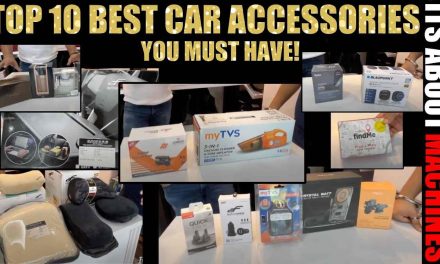Owning a car is not just about driving; it’s about responsibility. Proper maintenance ensures your vehicle stays in top condition, enhancing safety, performance, and longevity. In this article, we’ll explore ten indispensable maintenance tips every car owner should have in their toolkit.
Check Your Fluids Regularly:
1. Engine Oil: The lifeblood of your engine, check and change it as per manufacturer recommendations to prevent engine wear and maintain performance.
2. Transmission Fluid: Ensures smooth gear shifting and protects vital components. Regular checks can prevent costly transmission repairs.
3. Brake Fluid: Crucial for responsive braking. Check levels and condition regularly to ensure optimal brake performance.
4. Coolant: Regulates engine temperature. Regular checks prevent overheating and engine damage.
Keep Your Tires in Check:
1. Tire Pressure: Incorrect pressure affects fuel efficiency and tire wear. Check monthly and adjust as necessary.
2. Tire Tread Depth: Insufficient tread compromises grip and safety. Monitor tread depth and replace tires when worn.
3. Wheel Alignment: Proper alignment prevents uneven tire wear and ensures stable handling.
4. Tire Rotation: Distributes wear evenly, prolonging tire life and maintaining traction.
Regularly Inspect and Replace Filters:
1. Air Filter: Keeps contaminants out of the engine. Replace according to manufacturer guidelines for optimal engine performance.
2. Oil Filter: Ensures clean oil circulation. Replace during oil changes to prevent engine damage.
3. Fuel Filter: Filters out impurities in fuel. Regular replacement maintains fuel system efficiency.
4. Cabin Air Filter: Filters dust and pollutants from entering the cabin. Replace as needed for clean air inside the vehicle.
Maintain Battery Health:
1. Check Battery Terminals: Clean terminals prevent corrosion and ensure good electrical connections.
2. Clean Battery Connections: Corrosion impedes electrical flow. Regular cleaning extends battery life.
3. Test Battery Voltage: Low voltage indicates battery wear. Test regularly and replace if necessary.
4. Replace Old Batteries: A failing battery can leave you stranded. Replace every 3-5 years for peace of mind.
Don’t Neglect the Brakes:
1. Check Brake Pads: Worn pads compromise braking efficiency and safety. Replace as needed.
2. Inspect Brake Lines: Leaking or damaged lines affect brake performance. Inspect and repair promptly.
3. Monitor Brake Fluid Levels: Low fluid affects braking. Check regularly and top up as needed.
4. Test Brake Performance Regularly: Listen for unusual noises or vibrations and have brakes inspected if anything seems amiss.
Pay Attention to Lights and Signals:
1. Check Headlights and Taillights: Proper lighting is essential for visibility. Replace bulbs promptly to ensure safety.
2. Inspect Turn Signals: Functioning signals are crucial for safe lane changes and turns. Test regularly.
3. Test Brake Lights: Alert drivers behind you. Regularly check and replace if necessary.
4. Replace Bulbs Promptly: Burnt-out bulbs compromise visibility and safety. Replace promptly for optimal lighting.
Keep Your Engine Cool:
1. Check Radiator and Cooling System: Ensure proper coolant levels and inspect for leaks to prevent overheating.
2. Inspect Hoses and Belts: Cracked hoses or worn belts can lead to engine damage. Replace as needed.
3. Clean Radiator Fins: Remove debris to maintain proper airflow and prevent overheating.
4. Use Coolant Additives: Enhance coolant performance and prevent corrosion in the cooling system.
Clean and Wax Regularly:
1. Exterior Washing: Removes dirt and grime that can damage paint. Wash regularly to maintain a pristine exterior.
2. Waxing for Protection: Provides a protective barrier against the elements, preserving your vehicle’s paint finish.
3. Interior Cleaning: Remove debris and spills to maintain a clean and comfortable cabin.
4. Protecting Upholstery and Dashboard: Use UV protectants to prevent fading and cracking of interior surfaces.
Invest in Professional Inspections:
1. Regular Tune-Ups: Professional inspections catch issues early, preventing costly repairs down the line.
2. Diagnostic Scans: Identify hidden issues that may not be apparent during visual inspections.
3. Suspension and Steering Checks: Ensure a smooth and stable ride by inspecting suspension and steering components.
4. Exhaust System Inspections: Detect leaks or damage that can affect engine performance and emissions.
Conclusion:
Regular maintenance is the key to keeping your car running smoothly for years to come. By following these ten essential tips, you can ensure your vehicle remains safe, reliable, and enjoyable to drive. Don’t wait until something goes wrong – stay proactive and keep your car in top condition.





